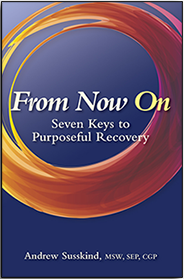How does attachment style relate to long-term sexual recovery?
As we discussed, you can teach an old dog new tricks, but doing so takes determination and endurance. If you were not raised with a secure attachment, and most of us were not, it’s not too late to establish secure attachments as grown-ups. Just because there were attachment gaps in your past doesn’t mean you’re destined to remain avoidant, ambivalent,
or anxious about relationships and love.
Find emotionally dependable relationships that offer you reliable and loving experiences, and they will be your growing, secure base. Be patient with yourself, and notice when your nervous system feels relaxed and calm. If you’re feeling more relaxed, your nervous system is letting you know that you’re trusting more—a sign that you’ve found contact you can count on.
When was the last time you felt most like yourself? For me, singing in my car, laughing with friends, and being silly with my dog is when I feel like myself. Ask yourself what makes you feel that way. Which activities allow you to feel comfortable in your own skin? This is another way to measure a regulated nervous system.
Your Nervous System Glossary
Familiarize yourself with the language of nervous system regulation:
- Grounding: an awareness of your body’s physical contact with the ground or something else that stabilizes it such as a supportive chair. Ground yourself anytime you feel dysregulated.
- Orienting: your attention to the environment around you; you notice your surroundings and let your eyes go wherever they want to go. Orient yourself whenever you feel dissociated or disconnected. In Brainspotting, Dr. Grand states that “where you look affects how you feel.”
- Pendulation: the natural swing in the nervous system between pain or discomfort and sensations that are neutral or pleasant. Pay attention to the natural waves of your nervous system.
- Resilience Zone: When you feel most regulated and more whole in mind, body, and spirit—sometimes called “being in flow.” Savor times of resilience by letting yourself take note of these warm, fuzzy, internal experiences.
- Resource: A positive characteristic, a pleasant memory, a person, place, animal, or thing that provides calm and peace. Use resourcing anytime you feel dysregulated and need to ground yourself.
- Titration: Gradual exposure to sensations of distress, discomfort, or pain to prevent overwhelming your nervous system. Be patient and gentle with trauma healing. You always get to choose how much or how little you delve into it.
- Tracking sensations: Pay attention to your physical sensations. By tracking, you’ll move away from being a talking head and experience more connection to your brain and your body.




